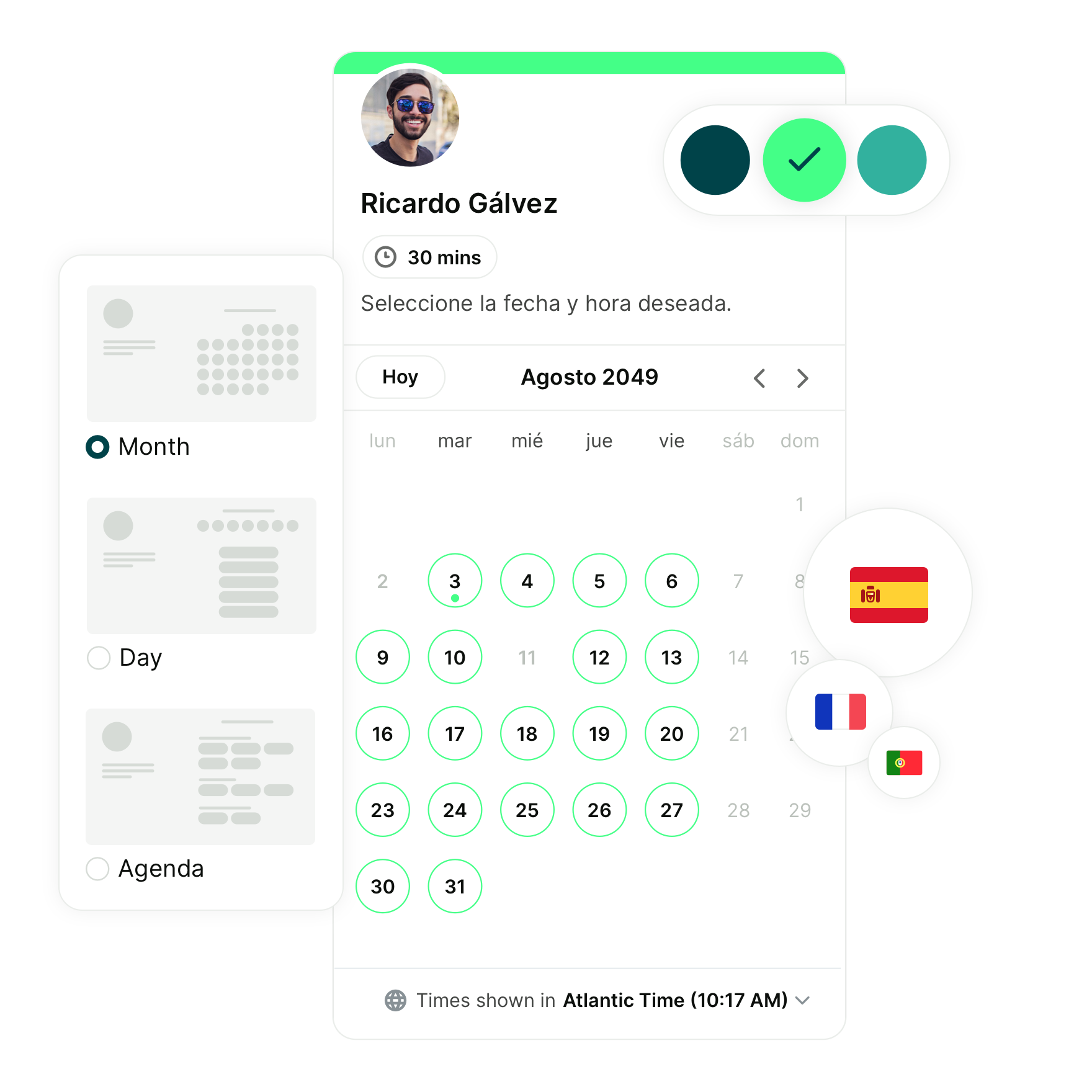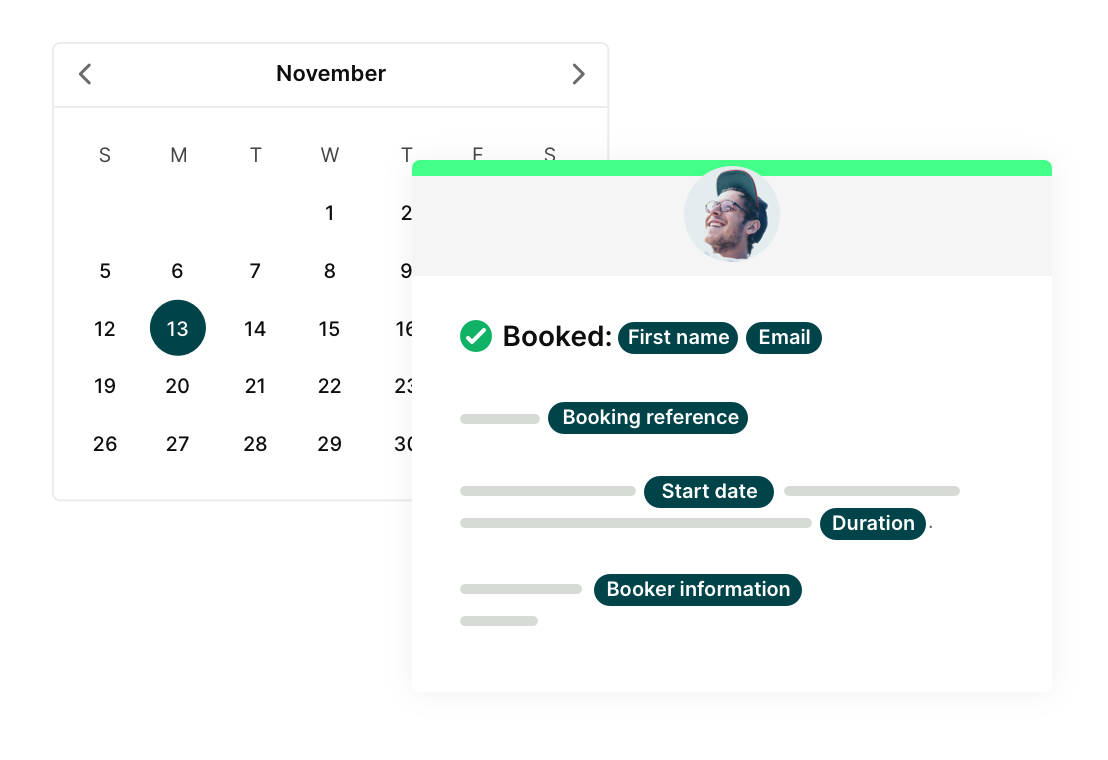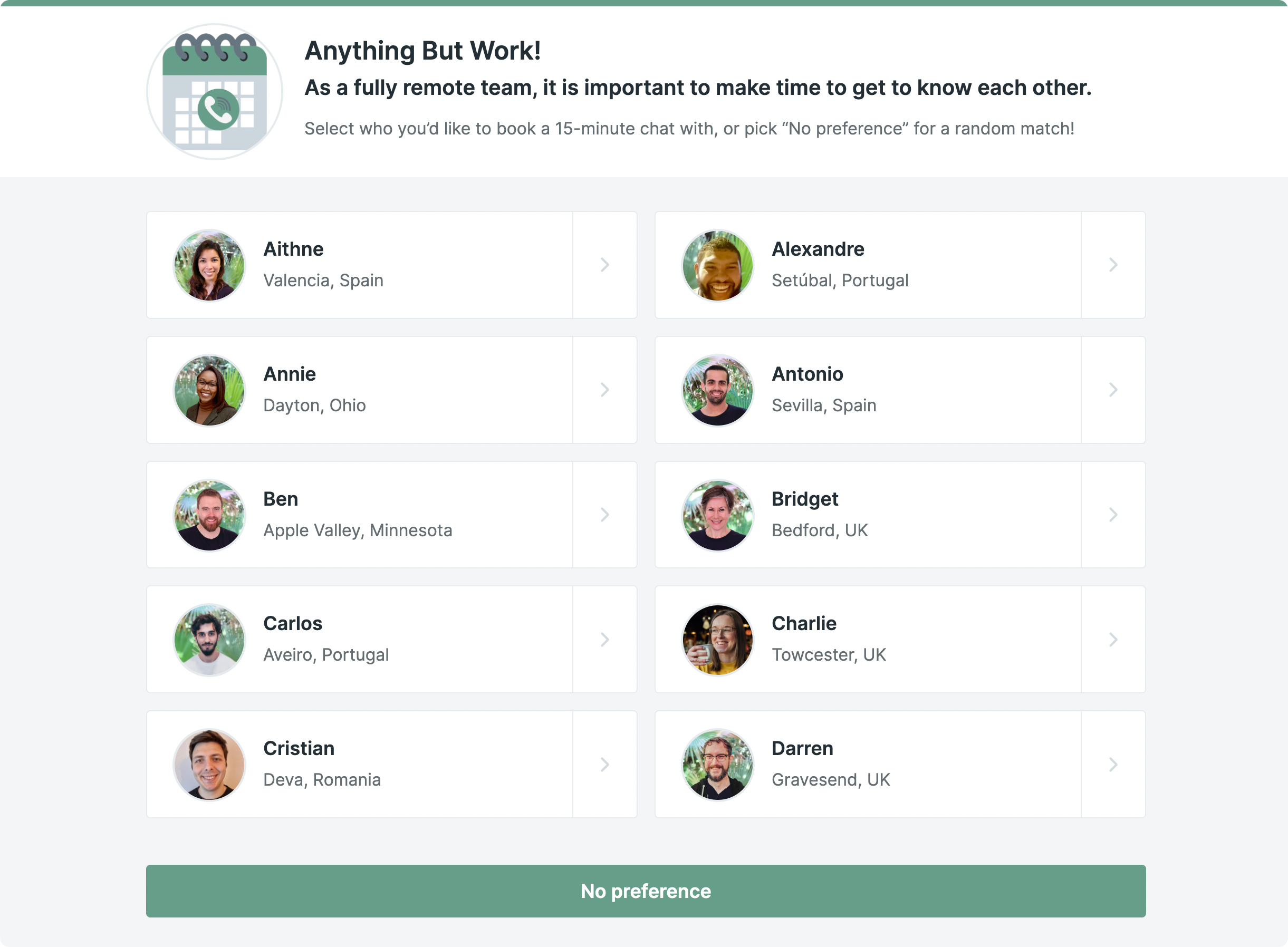6 Ways to personalize the employee onboarding process
Do you want your new employees to feel comfortable and excited to jump into their roles? Find out how to customize your onboarding process to quickly integrate new hires into your team.

David Wachs

Ready to book more meetings?

Remember your first few days at a new job? Was there a work buddy that gave you a tour around the office and a few pointers for your role?
Or was there a planned onboarding session where you got to learn about everything you need to know?
In many cases, the employee onboarding process is done carelessly, or sometimes — not at all. For a new member who is possibly a great addition to the team, feeling comfortable in the new environment means a lot.
This is where the employee onboarding process comes into play.
What is the employee onboarding process?
The employee onboarding process is a strategy that helps your new employees get integrated into your company.
It’s a set of activities that allows new hires to learn about your organization’s culture, mission, values, tools, software, benefits, teammates, etc. New employees can feel insecure and nervous, so helping them get acclimated is vital.
Why is employee onboarding important?
There are many reasons. If a new member quickly relaxes and integrates into the team, this potentially saves time and resources in the long run. They would also be ready to contribute to the company much faster which would ensure your business runs smoothly.
The last thing you want is to be ineffective because the employee onboarding is disorganized and it takes too long for your new member to become productive.
How to onboard a new employee
Onboarding an employee shouldn’t be hard. In most industries, people know what to expect. Basically, onboarding revolves around four key components:
- General — the basics a.k.a. company culture, values, goals, and team members
- Software — tools for team communication, data transfer, client presentation, and specific action
- Product — knowledge of your product, how it's used, and what its features are
- Role — this is the most crucial component and should be personalized and tailor-made. It includes what the role-specific duties are, workflow, buyer persona, sales scripts, and practice
Having a default guide or a single script for onboarding all new employees isn’t going to work. Of course, it does help to have a general guide that includes overarching information and allows your new employee to learn the technicalities.
However, if you have different departments and roles — you’ll need to customize your employee onboarding process.
Personalizing the process can be done in two ways: tailored both for the role and to the new member.
Do you need help with personalizing your employee onboarding process? Here are 5 tips you can use to improve your onboarding flow and with it, your business.
6 ways to personalize the employee onboarding process
1. Complete new hire paperwork prior to day one
Tax paperwork and filing agreements can take a large chunk of time that could be used more efficiently.
Send them to your new members so they can attend to these in the convenience of their home where their personal documents are at hand.
2. Write an itinerary as a short preview
During the employee onboarding process, learning the organizational structure can take a while.
When a new employee knows what their tasks and activities will be, they feel more comfortable and less stressed.
Make sure that you create a plan for your new hire — who to meet, what they would do the first few days, and which tools they would use. This will make them come prepared and ready to be productive from the start.
3. Let the new employee choose the time for their onboarding
The working world is changing. With remote teams spread across different time zones and flexible schedules becoming a part of the norm, you can let your new hire choose the time of their onboarding to ensure it doesn’t interfere with their plans.
Instead of simply saying “show up here at this time,” you can use scheduling software such as YouCanBook.me to give more power and consideration to the new hire.
Online scheduling tools let you send the new employee a link to your booking page showing all your free time, and they can choose the slot that works for them.
Confirmations, reminders, and follow-ups are all automated, which makes it easy for the new employee to remember about your meeting and have all the important information at their fingertips.

4. Send them a personalized welcome card
As we mentioned, having your new members feel comfortable and welcomed is very beneficial for employee onboarding.
Being a new member can create some anxiety, so you should try to help them during the transition.
A neat idea you could use is to write them a personalized welcome card.
Let them know they were a top candidate and will be a great addition.
Taking the time to write a personalized message just shows you care. If you want to go the extra mile, consider preparing handwritten cards that your new employees can keep.
5. Set short and long-term goals
Working without goals is like running without the finish line.
Your new employee needs orientation so you should set specific goals for the next 3, 6, and 12 months.
This creates a purpose from the start and makes the employee onboarding process a lot quicker.
Discuss expectations and how these goals will be achieved. Decide together on metrics to help you measure these goals.
6. Introduce them to the team
It’s easy to send an email to everyone saying — “hey guys, this is our new member X”, or to introduce them in front of everyone. They still might feel alienated and anxious.
To personalize the employee onboarding process, you should take a few minutes to personally introduce new members to their closest teammates.
For remote teams or teams spread throughout different offices, you may consider scheduling calls for informal “get to know you” chats.
Using an online scheduling tool, you can create team booking pages where new employees can easily book meetings to start building relationships with their co-workers.

You can also consider picking a “mentor” that can help with the process. If you’re well prepared, you won’t need to do this, but when you’re new it’s good to have someone you can ask questions and rely on.
Let’s wrap it up
Employee onboarding can be a formidable issue. Losing a potentially great worker because they didn’t get accustomed to the environment shouldn’t be an obstacle.
That’s why planning an employee onboarding process is of utmost importance. With it, you can cut down on a lot of repetitive questions and uncertainty.
How?
By introducing them to general activities and tools, and educating them about your product, their role, and expectations.
You want your new additions well and prepared so they can become productive as soon as possible.
After they ramp up, go back and ask them about their onboarding and what they think can be improved.
Send out a survey to your veteran team members about other tips and tricks that have helped them in the past and share these findings with your new hires!
We summed up 6 ways to personalize the employee onboarding process, and we hope this article can help you get your new team members acclimated and ready for their roles.
Good luck!
Subscribe to our newsletter
Get productivity tips, news, articles and resources.
Written by
David Wachs
David Wachs is the founder and CEO of Handwrytten - Handwriting Services for Brands. David is also a frequent speaker on messaging technology and has presented for the Direct Marketing Association, South By Southwest, and others.

